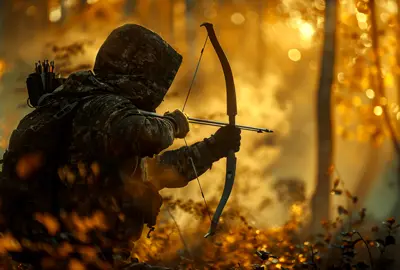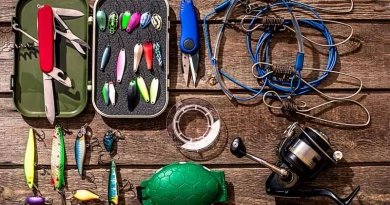To answer the question, “What is the best time of day to hunt deer?”, we must first delve into the habits and routines of deer. These creatures’ keen senses and wary nature are subject to a number of influences that control their movements.
1. Deer Activity Patterns
Crepuscular Nature:
Deer are crepuscular animals, meaning they are most active during the twilight hours of dawn and dusk. Their natural instinct to evade predators and forage when visibility is poor drives this behavior. During these times, the low light conditions provide them with a level of cover that helps them avoid predators, including humans.
Environmental Influences:
Several factors, such as weather, temperature, and human activity, can alter deer activity patterns and the best time to hunt deer. For example:
- Weather: Cooler temperatures often lead to increased daytime activity, as deer need to move more to maintain body heat.
- Temperature: In hot weather, deer tend to be more active during the cooler parts of the day—early morning and late evening.
- Human Activity: Deer adapt to human presence and pressure. In heavily hunted areas, they might shift their activity to times when there is less human presence, often becoming more nocturnal.
2. Scent and Sound Sensitivity
Keen Senses:
Deer rely heavily on their acute sense of smell and hearing. These senses are their primary means of detecting danger. A deer’s nose is incredibly sensitive, capable of detecting human scent from a considerable distance. Similarly, their ears can pick up the faintest sounds, alerting them to potential threats.
Exploring the Options and Overcoming Obstacles
The journey to determining the best time to hunt deer involves considering several options and overcoming specific obstacles.
 1. Morning Hunts
1. Morning Hunts
Pros:
- High Activity: The period just before and after sunrise is a prime time for deer movement as they transition from feeding areas to bedding areas.
- Cooler Temperatures: Morning temperatures are typically cooler, which can make deer more active and hunters more comfortable.
- Wind Patterns: Mornings often bring more predictable and stable wind patterns, aiding in scent control.
Cons:
- Limited Light: Early morning light can be limited, making it harder to spot deer and shoot accurately.
- Early Wake-Up: Getting into position before dawn requires an early start, which can be physically demanding.
2. Evening Hunts
Pros:
- High Activity: Deer often resume feeding in the late afternoon, making this another peak time for movement.
- Easier Access: Hunters can enter their stands or blinds in daylight, reducing the risk of spooking deer.
- Better Visibility: As the sun sets, visibility typically improves compared to dawn, allowing for clearer shots.
Cons:
3. Midday Hunts
Pros:
- Less Pressure: With fewer hunters in the woods, deer may move more freely.
- Behavioral Changes: During the rut or in colder weather, deer may be active during midday hours.
Cons:
- Lower Activity: Outside of specific circumstances, deer are generally less active during the middle of the day.
- Heat: In warmer weather, midday temperatures can be uncomfortable for both deer and hunters.
The Best Solution: Prime Time Strategy
 After years of experience and countless hours spent observing and hunting deer, I’ve honed in on a strategy that combines the advantages of both morning and evening hunts.
After years of experience and countless hours spent observing and hunting deer, I’ve honed in on a strategy that combines the advantages of both morning and evening hunts.
1. Focus on Transition Zones
Travel Corridors:
Identify and set up near travel corridors that deer use to move between bedding and feeding areas. These are often the most productive spots during twilight hours and make one of the best times to hunt deer. Deer prefer routes that offer cover, such as the edges of fields, forest trails, and natural funnels created by the terrain.
Edges:
Hunt along the edges of different habitats, such as the boundary between a field and a forest. Deer often use these areas as natural cover while moving. These transition zones provide food and cover, making them ideal spots to catch deer during their active hours.
2. Optimize Scent and Sound Control
Wind Direction:
Always position yourself downwind of the anticipated deer movement to prevent your scent from reaching them. Checking wind direction frequently and adjusting your position accordingly can make a significant difference in your success rate.
Quiet Entry:
Move quietly and deliberately, avoiding unnecessary noise that could alert deer to your presence. Soft-soled boots, minimizing movement, and taking slow, deliberate steps can help you remain undetected.
3. Timing
Early Morning:
Get into position at least an hour before sunrise. This allows you to settle in and let the forest calm down before deer begin to move. The early arrival also ensures you’re in place when deer transition from their feeding areas to their bedding areas, making this one of the best times to hunt deer.
Late Afternoon:
Arrive at your stand or blind a few hours before sunset, ensuring you’re ready for the late afternoon surge in activity. This time period is crucial as deer begin to leave their bedding areas and head to feeding grounds, providing excellent hunting opportunities.
Tools and Resources Needed To Hunt Deer
To effectively implement this strategy, certain tools and resources are essential:
- Quality Optics: Binoculars and scopes with good low-light performance are crucial for spotting deer during dawn and dusk.
- Scent Control Gear: Use scent-eliminating sprays and wear scent-blocking clothing to minimize your odor.
- Reliable Gear: Ensure your weapon, whether a rifle or bow, is well-maintained and sighted in for accurate shots in low light conditions.
- Weather Apps: Use weather apps to track wind patterns and forecast changes that could impact your hunt.

 Understanding Deer Habits, Routines, and The Best Time To Hunt Deer
Understanding Deer Habits, Routines, and The Best Time To Hunt Deer As the sun set and the forest began to bathe in the soft glow of twilight, I reflected on the day’s hunt. The best time to hunt deer isn’t just a matter of clock-watching—it’s about understanding the rhythms of nature, respecting the animal, and adapting to the ever-changing environment. By focusing on the prime times of dawn and dusk, positioning yourself strategically, and employing sound and scent control measures, you increase your chances of a successful and rewarding hunt. Each hunt becomes a story, a moment etched in memory, where preparation meets opportunity in the timeless dance between hunter and quarry.
As the sun set and the forest began to bathe in the soft glow of twilight, I reflected on the day’s hunt. The best time to hunt deer isn’t just a matter of clock-watching—it’s about understanding the rhythms of nature, respecting the animal, and adapting to the ever-changing environment. By focusing on the prime times of dawn and dusk, positioning yourself strategically, and employing sound and scent control measures, you increase your chances of a successful and rewarding hunt. Each hunt becomes a story, a moment etched in memory, where preparation meets opportunity in the timeless dance between hunter and quarry.








